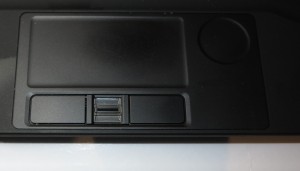Super Bowl 2021 ad for Logitech’s latest products
Article
Logitech made so much money during the pandemic it could afford this Super Bowl ad – The Verge
Video
Logitech Super Bowl ad – Click or tap to play in YouTube
My Comments
In North America, the NFL Super Bowl is the penultimate final match for American “Gridiron” football. This also has the half-time entertainment with some big-time stars performing but it is also seen by the TV stations as the most valuable TV show there. It is thanks to many people watching it wherever they can on their TVs and this same football show ends up as a showcase of the best TV commercials that Americans have seen.
Most years I have highlighted and commented on consumer-technology ads that have appeared in this advertising showcase, incase you were overseas or were at a Super Bowl viewing party but missed that ad while reaching for that chicken wing or dipping those chips in that special dip. For example I had cited an ad for Microsoft’s Xbox Adaptive Controller with its focus on inclusive gaming.
This year, Logitech had joined the Super Bowl advertising showcase with an ad highlighting their current computer-peripheral product range in a creative context. Logitech is one of those brands I value due to their consistent use of Bluetooth as a wireless-connection option for all of their wireless input devices rather than just the dongle-based wireless approach. As well, the development of Darkfield technology has impressed me due to the ability to use suitably-equipped optical mice on glass surfaces.
Logitech had made so much money during 2020 thanks to the COVID-19 coronavirus plague. This is due to them selling computer peripherals like mice like the MX Anywhere 3 Bluetooth mouse I have reviewed, keyboards and Webcams for us to equip our home offices with. For example, a lot of these devices would have been used to build out a desktop workspace for that laptop as mentioned in this HomeNetworking01.info article. Some of the pundits were evens saying that Logitech could even produce and run a Super Bowl ad on the back of their profits of these sales.
The Super Bowl ad carved out a message about determination in the face of what may be perceived as logic. This may be due to Lil Nas X (Wikipedia article) and his life including coming out as gay and hitting out against homophobia in hip-hop music, or fusing country-and-western music with elements of the hip-hop style especially rapping.
The vision in the ad underscored the use of a wide range of Logitech input devices like mice, styluses and keyboards with differing computing devices for creative purposes. There wasn’t any highlighting of certain products within their latest product lineup but it was about showing the whole lineup working together.
It is showing a distinctive direction for tech-focused advertising where the technology is for use by everybody no matter who they are, along with the idea of running these campaigns during key sports events where everyone would be watching.

